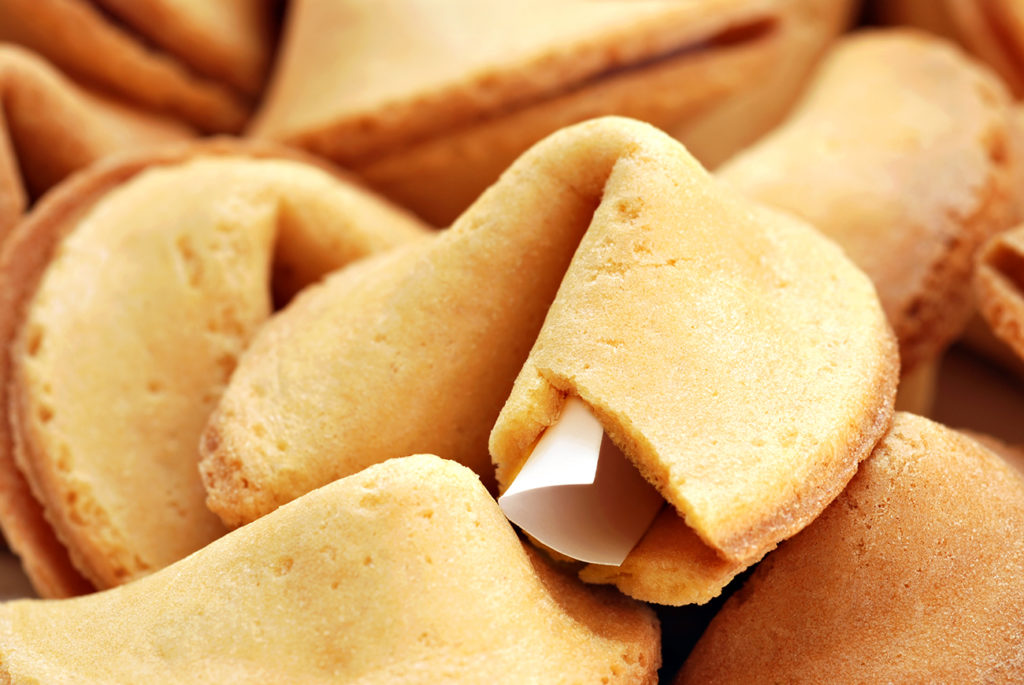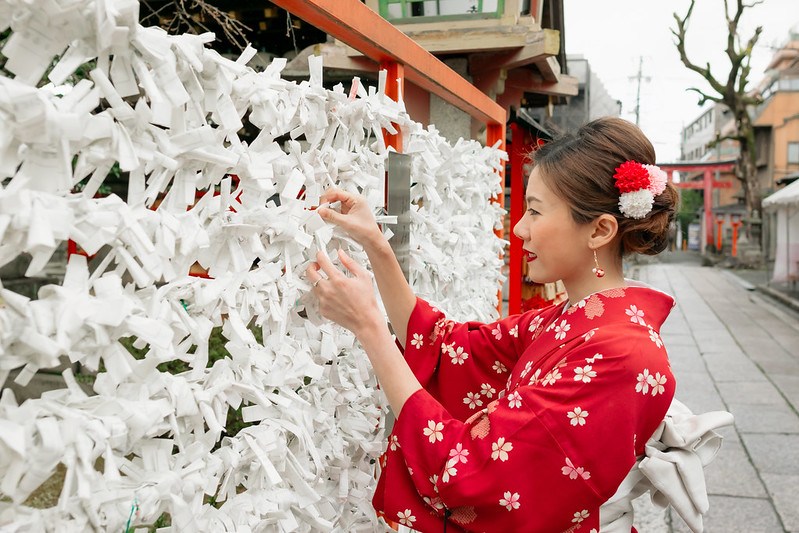
The Fortune Cookie: A Japanese Invention
Dining out at a Chinese restaurant or having Chinese take-out would not be complete without cracking open a fortune cookie and reading the fun sayings in store on that itty bitty piece of paper. Fortune cookies are commonly associated with Chinese food. Would you believe? . . . fortune cookies were actually invented in Japan.
The Japanese have used omikuji in Buddhist temples and Shinto shrines all over Japan since the 1800s. Omikuji are random fortunes written on strips of paper and are considered sacred lots that can be received whenever an offering is made; one can choose a strip of paper at random. If the fortune is bad, the person can tie it up in a knot on a pine tree branch or on a row of metal wires found in shrines and temples. If it is good, the bearer can keep it, still tieing it for stronger effect.
A cookie similar to the fortune cookie we know today was first made in Kyoto. It had slightly darker dough, and the batter consisted of miso and sesame instead of butter and vanilla–the thing was more a cracker than a cookie. The tiny piece of paper that contained the fortune was wedged in a bend in the cookie. The Japanese version of the fortune cookie is called tsujiura senbei. The origins of the fortune cookie can be traced back to a 19th-century Japanese story book, Moshiogusa Kinsei Kidan.
The fortune cookie found its way to America via Japanese immigrants in California between 1907 to 1914. Makoto Hagiwara is said to be the first person in the U.S. to serve the modern version of the fortune cookie at a San Francisco Chinese restaurant in Golden Gate Park called the Japanese Tea Garden. The cookies were made by Benkyodo, a Japanese bakery in the area.
During the 1940s, fortune cookies were still a regional specialty in California Chinese restaurants. During World War II, the Japanese Americans who spent time in internment camps spread the custom, and U.S. soldiers who had been to California or the internment caps began to ask for the eatable fortunes at other Chinese restaurants. The rest is history.
In the early 20th century, fortune cookies were made by hand. Then Shuck Yee of Oakland invented a machine, the price dropped, and fortune cookies are now synonymous with Chinese cuisine.


